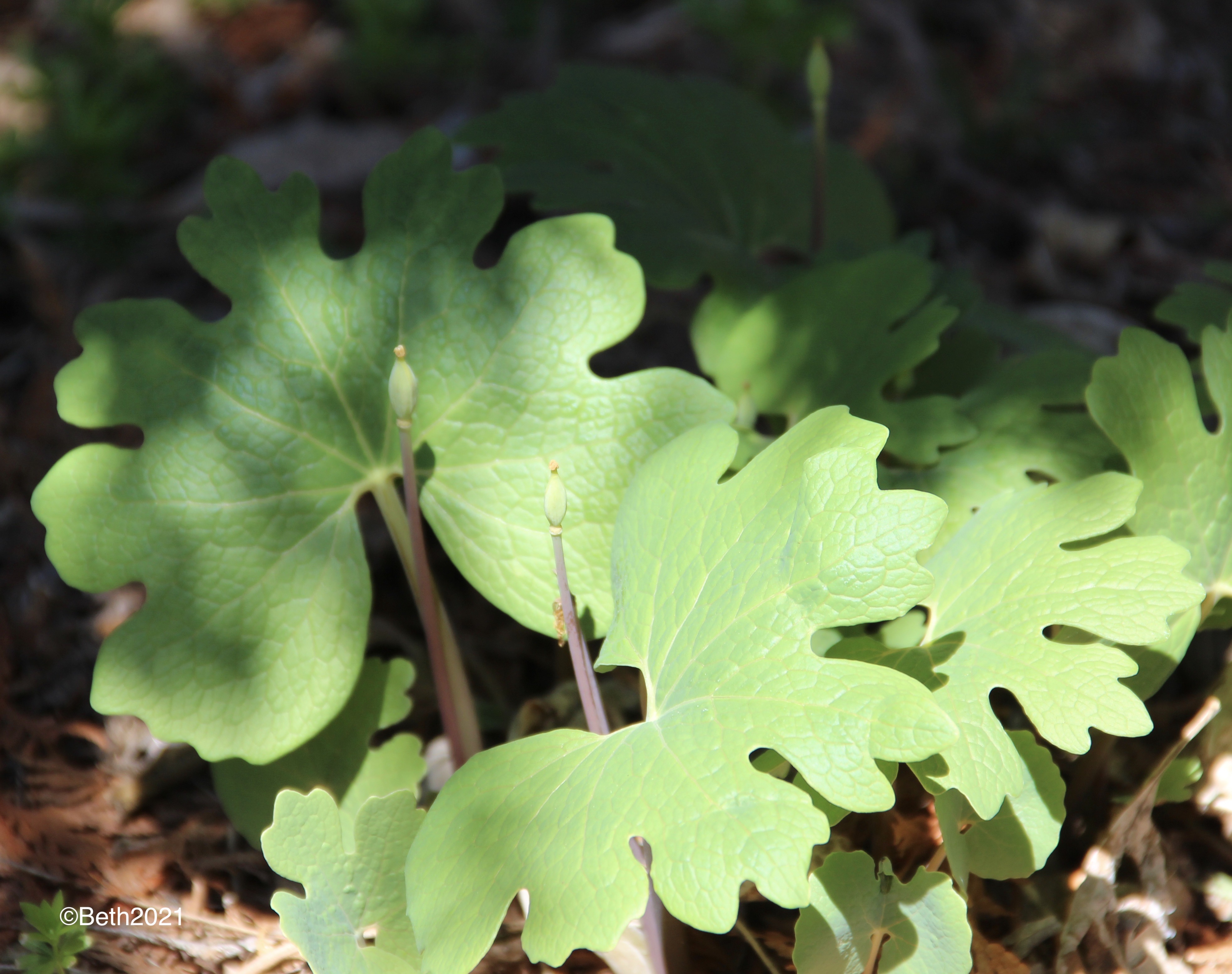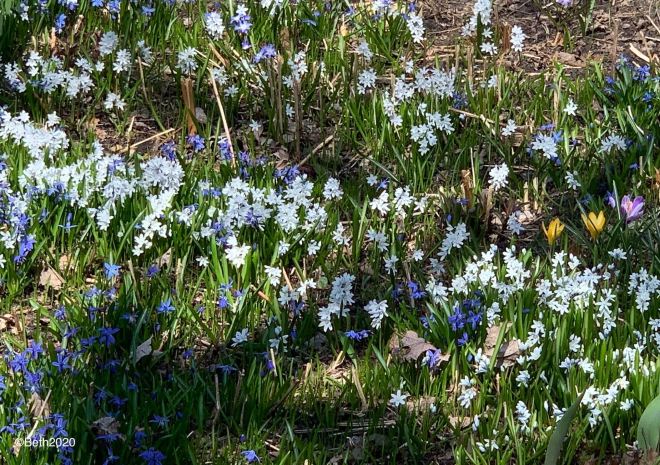
Native bloodroot flowers (Sanguinea canadensis) emerge with a single leaf tightly wrapped around each of them. (Notice the early native bee near the top of the photo!)
One of Minnesota’s earliest native wildflowers is bloodroot, (Sanguinea canadensis). Given its name, you might expect a scarlet or crimson flower. In fact, it blooms ice-white with a sun-gold center, though some emerge light pink. They look out of place, so stark and fresh among the remains of last year’s woodland growth and garden detritus. Its name refers to the toxic red-orange sap in the rhizome or root.
Each bloom emerges wrapped in a single curling leaf like a little blanket. The leaf remains curled until the blossom withers and then unfurls into a rounded leaf with a varying number of lobes. The leaves range in color from light green to blue-green depending on the plant’s age and condition. In its natural setting, bloodroot often grows along woodland edges, which provide sun in early spring and shade when the trees leaf out. In my garden, it grows along the edge of an arbor vitae hedge and under an ash tree. With shade and regular watering, bloodroot creates a pretty ground cover that lasts all summer under deciduous trees. If they aren’t watered during summer’s hot, dry spells, bloodroot leaves just go dormant until the following spring.

Sometimes the flowers have a pink coloration when they open.
Native bees, honey bees and beetles pollinate bloodroot, which also can self-pollinate. Fertilized flowers form elongated capsules that enclose spherical seeds colored black, red, or brown. Here’s what’s special about bloodroot seeds: Each produces an elaiosome, an attachment containing lipids, amino acids and other nutrients. Attracted to these nutrients, ants carry the seeds back to their nests and feed the elaiosomes to their larvae. The ants either discard the remaining seed in a separate chamber of their nest, or toss it back out onto the ground. Either way, this process, called myrmecochory, helps ensure that the bloodroot seeds are dispersed for germination. Other spring wildflowers, such as violets, trilliums, hepaticas and Canada wild ginger, also form this mutual relationship with ants.

Ants help disperse the seeds after ripe bloodroot pods split open.
A member of the poppy family, bloodroot is native to much of eastern North America from Nova Scotia south to Florida, west to Manitoba and south to Texas. Native Americans used the plant’s red sap to make paint and to dye clothing, leather and other items. It blooms from March to May in Minnesota woodlands and was one of the first native wildflowers that I identified in the woods at our cabin years ago. The plants in most of these photos grow in our backyard. They hold special meaning for me because they were a gift from my aunt, who grew them under her trees for decades. They remind me of how she nurtured my love for nature when I was young.

Native bloodroot covers a hillside above the Mississippi River in the Twin Cities.
Further reading:
Friends of the Wildflower Garden – Bloodroot







